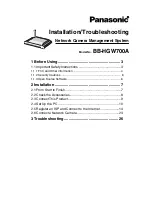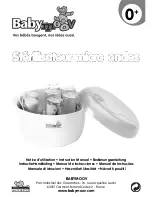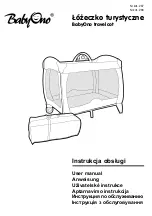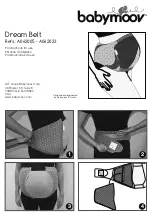
®
Carbon Dioxide ISE Probe
Introduction
2
012-15719A
Introduction
This Carbon Dioxide Ion Selective Electrode (ISE) Probe
is a gas-sensing electrode that allows fast, simple, eco
-
nomical, and accurate measurement of dissolved CO
2
in
aqueous solutions.
Technology: Replaceable Electrode Body with PVC
Membrane
Overview
Required Equipment
•
PASCO Wireless pH/ISE/ORP Sensor (PS-3204)
or
•
PASPORT High Precision pH/Temperature with
ISE/ORP Amplifier (PS-2107) with a PASCO
interface (see www.pasco.com for information)
or
•
Ion meter or pH/mV meter
•
PASCO data collection software (see
www.pasco.com)
•
Wash bottle filled with distilled or de-ionized water
•
pH Buffer Solution 4.01*
•
pH Buffer Solution 7.00*
•
Lab wipes
•
Magnetic Stirrer with Stir Bar
•
Clean beakers**
(*SC-2321 pH Buffer Capsule Kit)
(**SE-7287 100 mL Beakers (12 pack) or SE-7288 1000
mL Beakers (6 pack)
Included Required Solutions*
•
Reference Fill Solution
•
1000 ppm Carbon Dioxide Standard Solution
•
Ionic Strength Adjuster (ISE)
(*For replacement items, see the Technical Support sec
-
tion at the end of this document.)
Electrode assembly
Important. Please read these instructions before assem
-
bling the Carbon Dioxide ISE Probe
1. Carefully remove the internal glass electrode from
the box. Remove the boot, which covers the tip of
the internal glass electrode. Keep the boot for later
use.
•
Note: Soaking the internal glass electrode in internal
filling solution or pH 4.01 buffer for at least 1 hour
before proceeding with the following steps will
ensure fast response.
2. Remove an electrode body from the box. Using the
solution provided, fill the electrode body with about
3.5 mL of Reference Fill Solution.
3. Rinse the internal glass electrode with DI water, blot
dry. Place it into the electrode body, which has been
filled with the filling solution.
IT IS VERY IMPORTANT TO MAKE SURE THAT THE
KEY PIN ON THE INTERNAL GLASS ELECTRODE
CAP MUST FIT INTO THE NOTCH AT THE TOP
OPENING OF THE ELECTRODE BODY SO THAT THE
INTERNAL GLASS ELECTRODE WILL NOT SPIN
DURING FURTHER ASSEMBLY. THE INTERNAL
GLASS ELECTRODE SPINNING DURING ASSEMBLY
WILL DAMAGE THE MEMBRANE AT THE BOTTOM
OF THE ELECTRODE BODY, WHICH IS NOT
COVERED BY THE WARRANTY.
4. Install the threaded top cap onto the threaded sec
-
tion at the top of the electrode body. Tighten the cap
until snug. Do not over tighten.
Size and Material
Body (Epoxy): 12 mm OD x 155
mm Length
Cap (ABS): 16 mm OD x 47 mm
Length
Range
4.4 to 400 ppm as CO
2
Reproducibility
±2% of reading
Slope
52 to 60 mV at 25°C, typical
Minimum Sample
3 mL in a 30 mL beaker
pH Range
Samples and standards must be
adjusted to below pH 4.00
Operating Temperature 0 to 50°C
Electrode resistance
less than 1,000 megaohms
Interferences
volatile weak acid (gaseous)























